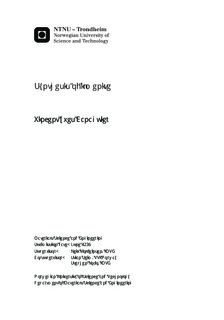Synthesis of ilmenite
Master thesis
Permanent lenke
http://hdl.handle.net/11250/249580Utgivelsesdato
2014Metadata
Vis full innførselSamlinger
Sammendrag
Ilmenite ores are currently processed at TiZir Titanium & Iron AS in Tyssedal. To be prepared for a change in the raw material composition, the effect of the impurities in the ilmenite ores has to be investigated. It is particularly important to know the behavior of these impurities during the reduction processes. Thus, a synthesis method to produce a pure raw material of reference has to be developed in a reproducible way. This works also focuses on the addition of chosen impurities in the ilmenite synthesized. Ultimately, the reduction reactions are investigated.The synthesis of pure ilmenite is developed using the cold crucible induction furnace. A melting route is used for both pure ilmenite and Mg-rich ilmenite synthesis with iron, iron oxide, titanium oxide and magnesium oxide as starting materials. Two gas reduction experiments have been carried out, using CO and H2 gas. Mass loss curves, XRD analysis and electron probe micro-analysis are obtained from these experiments.The pure and Mg-rich ilmenite synthesized correspond to the expectations, showing only a few of undesired phases. Potential improvements for the process are also given, concerning in particular the raw materials positioning in the crucible. The reduction experiments show three distinct steps in the case of H2 reduction, but only two with CO. The results suggest that the particle size might be determining for the CO reduction. The stopping of the experiment by cutting the reducing gas flow is proposed to investigate the reaction closer.
